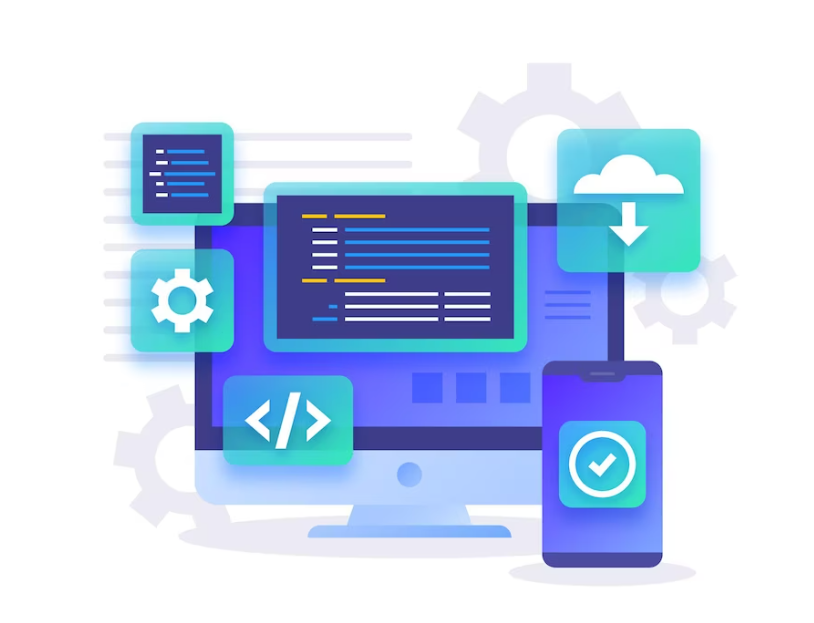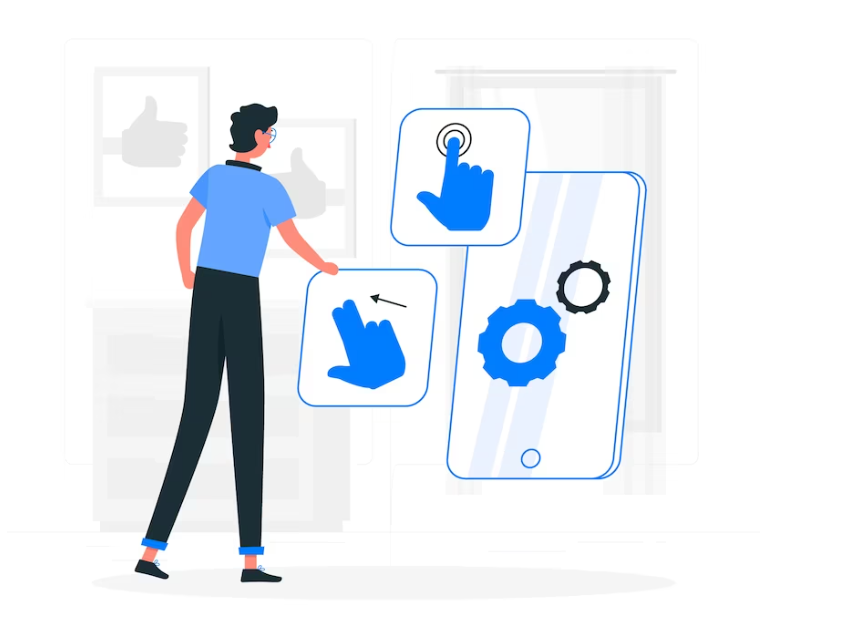"The Future of Software Development: Trends and Technologies to Watch"

The software development landscape is constantly evolving, with new trends and technologies shaping the future of the industry. In this blog post, we will explore some of the key trends and technologies that are poised to transform software development in the coming years.
1. Artificial Intelligence (AI) and Machine Learning (ML):
AI and ML are revolutionizing software development by enabling intelligent automation, predictive analytics, and data-driven decision-making. Developers are leveraging AI-powered algorithms and models to enhance software capabilities, from chatbots and virtual assistants to recommendation systems and fraud detection.
2. Internet of Things (IoT):
As the IoT ecosystem expands, software developers are adapting to connect and control a wide range of smart devices. From smart homes and wearables to industrial automation and smart cities, IoT-enabled software solutions offer seamless integration and real-time data exchange, paving the way for innovative applications and improved efficiency.
3. Low-Code/No-Code Development:
Low-code and no-code platforms are empowering businesses to create software solutions without extensive coding knowledge. These platforms provide visual interfaces and pre-built components, allowing users to assemble applications using drag-and-drop functionalities. This trend democratizes software development and accelerates the delivery of custom solutions.
4. Progressive Web Apps (PWAs):
PWAs combine the best features of web and mobile applications, providing a seamless user experience across different devices. These lightweight applications can be accessed via a browser and offer offline capabilities, push notifications, and smooth performance. PWAs eliminate the need for separate development for multiple platforms, reducing time and cost.
5. DevOps and Continuous Integration/Continuous Delivery (CI/CD):
DevOps practices, coupled with CI/CD pipelines, are revolutionizing software development and deployment. Automation, collaboration, and continuous feedback enable faster and more reliable software releases. DevOps teams are streamlining processes, breaking down silos, and embracing a culture of continuous improvement for efficient software delivery.
6. Blockchain Technology:
Blockchain is disrupting industries beyond cryptocurrencies. Its decentralized and immutable nature offers secure and transparent solutions for data integrity, supply chain management, digital identity, and more. Software developers are exploring blockchain frameworks and platforms to build robust and trustworthy applications.
7. Cloud Computing and Serverless Architecture:
Cloud computing continues to transform software development, enabling scalable and flexible infrastructure. Serverless architecture, in particular, abstracts server management, allowing developers to focus on code without worrying about infrastructure scaling. This trend enhances development speed, reduces costs, and ensures optimal resource utilization.
The future of software development holds immense potential with emerging trends and technologies. AI, IoT, low-code development, PWAs, DevOps, blockchain, and cloud computing are shaping the way software is built, deployed, and used. Staying abreast of these trends and embracing relevant technologies will empower businesses to develop innovative solutions and remain competitive in the dynamic digital landscape.
"Unlocking Business Potential with Custom Software Solutions"

In today's highly competitive business landscape, organizations are constantly seeking ways to gain a competitive edge. Custom software solutions have emerged as a powerful tool to unlock business potential, providing tailored solutions to address unique challenges and opportunities. In this blog post, we will delve into the benefits and applications of custom software solutions and how they can empower businesses to achieve success.
1. Addressing Unique Business Needs:
Off-the-shelf software may not always align perfectly with the specific requirements of a business. Custom software solutions are designed from the ground up, tailored to fit the unique needs and workflows of an organization. By addressing specific pain points and streamlining processes, custom software empowers businesses to operate more efficiently and effectively.
2. Enhanced Efficiency and Productivity:
Custom software solutions are built with the specific goals of increasing efficiency and productivity in mind. By automating manual tasks, eliminating redundant processes, and providing intuitive user interfaces, custom software streamlines operations and enables employees to focus on value-added activities. This leads to improved productivity and overall business performance.
3. Seamless Integration:
One of the key advantages of custom software is its ability to seamlessly integrate with existing systems and technologies. Whether it's integrating with third-party applications, legacy systems, or data sources, custom software ensures smooth data flow and eliminates data silos. This integration capability enhances collaboration, improves data accuracy, and enables informed decision-making.
4. Scalability and Flexibility:
As businesses grow and evolve, their software needs may change. Custom software solutions offer scalability and flexibility, allowing for seamless expansion and adaptation. Whether it's accommodating increased user loads, adding new functionalities, or integrating with emerging technologies, custom software can easily scale and adapt to meet evolving business requirements.
5. Competitive Advantage:
Custom software solutions provide a competitive advantage by offering unique features and capabilities tailored specifically for a business. This differentiation allows organizations to stand out in the market, attract more customers, and retain existing ones. By aligning software with business strategies, custom solutions enable businesses to gain a competitive edge and stay ahead of the competition.
6. Data-Driven Decision Making:
Custom software solutions can be designed to capture and analyze business data, providing valuable insights for data-driven decision making. By consolidating and visualizing key performance indicators, custom software enables businesses to make informed decisions, identify trends, and seize opportunities. This data-driven approach leads to better strategic planning and improved business outcomes.
7. Ongoing Support and Maintenance:
Custom software solutions are accompanied by ongoing support and maintenance services. This ensures that the software remains up-to-date, secure, and optimized for performance. With timely updates, bug fixes, and technical assistance, businesses can rely on their custom software to operate smoothly and effectively.
Custom software solutions unlock business potential by aligning technology with unique business needs. From enhancing efficiency and productivity to providing a competitive advantage and enabling data-driven decision-making, custom software empowers businesses to achieve their goals and drive success. By investing in custom software, organizations can optimize their operations, adapt to changing market dynamics, and stay ahead in today's rapidly evolving business landscape.
"Enhancing User Experience: Best Practices in UI/UX Design"

In the digital age, user experience (UX) has become a critical factor in the success of software applications. The way users interact with software greatly influences their satisfaction, engagement, and overall perception of a brand. In this blog post, we will explore best practices in user interface (UI) and UX design that can enhance the user experience and create intuitive and engaging software applications.
1. User-Centered Design:
User-centered design is the foundation of a great user experience. It involves understanding the needs, goals, and behaviors of your target users and designing the software interface accordingly. By conducting user research, creating user personas, and performing usability testing, you can ensure that your UI/UX design aligns with user expectations and preferences.
2. Intuitive and Consistent Navigation:
Clear and intuitive navigation is crucial for users to easily navigate through the software application. Use familiar navigation patterns, such as a well-organized menu or breadcrumbs, to guide users through different sections and features. Consistency in layout, terminology, and visual elements across the application ensures a seamless and familiar user experience.
3. Responsive and Mobile-Friendly Design:
With the increasing use of mobile devices, designing for responsiveness and mobile-friendliness is essential. Ensure that your software application adapts to different screen sizes and resolutions, providing a consistent experience across devices. Consider touch-friendly interactions, optimized content layout, and performance optimization for mobile users.
4. Visual Hierarchy and Information Architecture:
Effective visual hierarchy and information architecture enable users to easily scan and find relevant information. Use visual cues such as size, color, and typography to prioritize important elements and guide user attention. Organize content and features in a logical and intuitive manner, allowing users to navigate and access information effortlessly.
5. Minimalistic and Clean Design:
Simplicity and minimalism in UI design can significantly enhance the user experience. Avoid cluttered interfaces and unnecessary visual elements that can overwhelm users. Use ample white space, prioritize essential elements, and maintain a clean and uncluttered design aesthetic. This allows users to focus on the core functionality and content of the software.
6. Feedback and Affordance:
Providing timely and meaningful feedback to user actions is crucial for a positive user experience. Use visual cues, animations, and microinteractions to provide feedback on user interactions, such as button clicks or form submissions. Clear affordances, or visual indicators of interactivity, help users understand how to interact with different elements of the software.
7. Accessibility and Inclusivity:
Designing for accessibility ensures that your software is usable by individuals with disabilities. Consider factors such as color contrast, font size, keyboard accessibility, and screen reader compatibility. By adhering to accessibility guidelines, you can create a more inclusive experience for all users and comply with legal requirements.
8. Continuous Iteration and User Feedback:
UI/UX design is an iterative process. Collect user feedback, conduct usability tests, and analyze user behavior to identify areas for improvement. Regularly iterate and refine your design based on user insights, ensuring that the software evolves to meet user needs and preferences.
By following best practices in UI/UX design, you can create software applications that deliver exceptional user experiences. A user-centered approach, intuitive navigation, responsive design, visual hierarchy, minimalism, feedback mechanisms, accessibility considerations, and continuous iteration are key elements in designing software that delights users and fosters engagement and satisfaction. Prioritizing the user experience will not only differentiate your software in the market but also drive user adoption, loyalty, and business success.
"Agile Project Management: Ensuring Successful Software Delivery"

Agile project management has revolutionized the software development process, enabling teams to deliver high-quality software solutions in a more efficient and flexible manner. In this blog post, we will explore the principles and practices of Agile project management and how they contribute to successful software delivery.
1. Iterative and Incremental Development:
Agile project management emphasizes iterative and incremental development over traditional linear approaches. Instead of working on a single, monolithic release, software development is divided into smaller, manageable iterations or sprints. This allows for faster feedback, continuous improvement, and the ability to adapt to changing requirements.
2. Cross-Functional and Collaborative Teams:
Agile teams are cross-functional, bringing together professionals with diverse expertise, including developers, designers, testers, and stakeholders. Collaboration is at the core of Agile project management, with team members working closely together throughout the development process. This fosters effective communication, knowledge sharing, and a shared ownership of project success.
3. Clear and Prioritized Backlog:
Agile projects maintain a prioritized backlog of features, user stories, and tasks. The backlog is constantly reviewed, refined, and reprioritized based on changing requirements and customer feedback. This ensures that the team is always working on the most valuable and relevant features, maximizing the delivered business value.
4. Continuous Integration and Testing:
Agile promotes continuous integration and testing to ensure early detection of issues and the delivery of high-quality software. Code changes are integrated frequently, and automated tests are run continuously to validate functionality and identify defects. This reduces the risk of late-stage surprises and improves overall software quality.
5. Regular and Transparent Communication:
Agile project management encourages regular and transparent communication among team members and stakeholders. Daily stand-up meetings, sprint reviews, and retrospectives facilitate effective collaboration and keep everyone aligned on project progress, challenges, and goals. This transparency promotes early issue resolution and prevents misalignments.
6. Embracing Change:
Agile projects embrace change as a natural part of software development. Rather than rigidly following a fixed plan, Agile teams are responsive to changing requirements, emerging technologies, and market dynamics. This flexibility allows for adaptation and optimization throughout the development process, leading to a better fit with customer needs.
7. Continuous Delivery and Feedback:
Agile project management aims for continuous delivery of software increments, allowing for quick validation, feedback, and course correction. Feedback from stakeholders and end-users is incorporated regularly, ensuring that the software aligns with their expectations and needs. This iterative feedback loop helps improve the final product and enhances customer satisfaction.
8. Retrospective and Continuous Improvement:
Agile teams conduct regular retrospectives at the end of each sprint to reflect on what went well, what could be improved, and how to enhance the team's performance. Continuous improvement is ingrained in Agile project management, with lessons learned being applied to future iterations, fostering a culture of learning and innovation.
Agile project management is a powerful approach for ensuring successful software delivery. By embracing iterative and incremental development, fostering collaboration, prioritizing the backlog, promoting continuous integration and testing, encouraging transparent communication, embracing change, and incorporating feedback, Agile enables teams to deliver high-quality software that meets customer needs and adapts to evolving requirements. Adopting Agile principles and practices can lead to more efficient, productive, and successful software projects.

